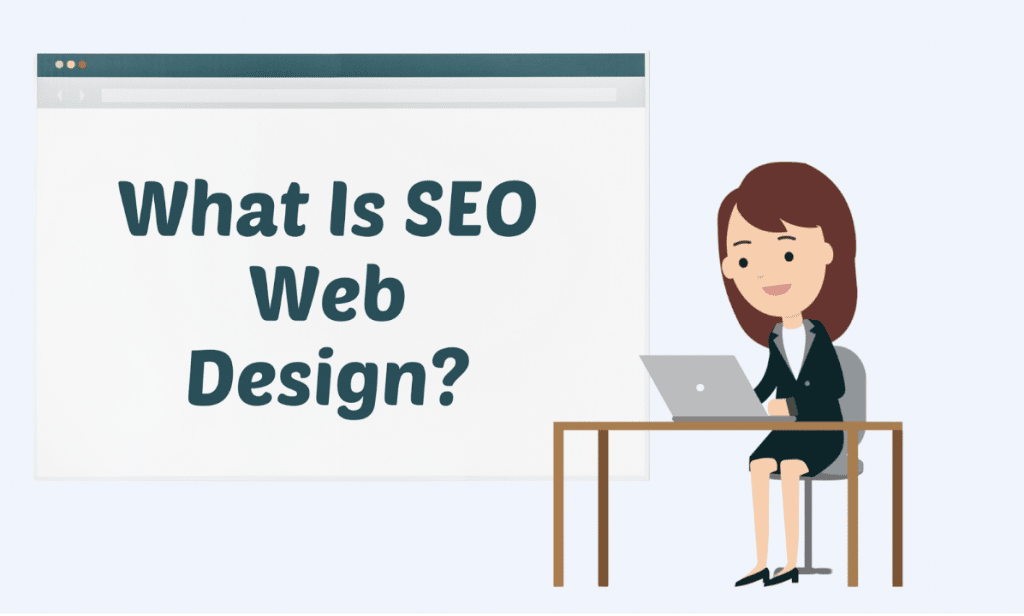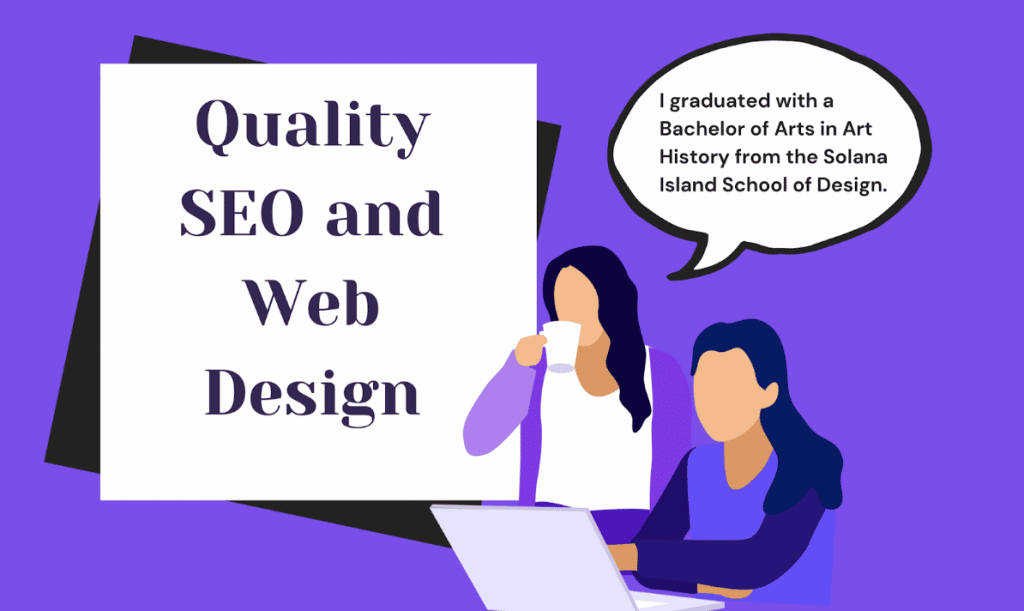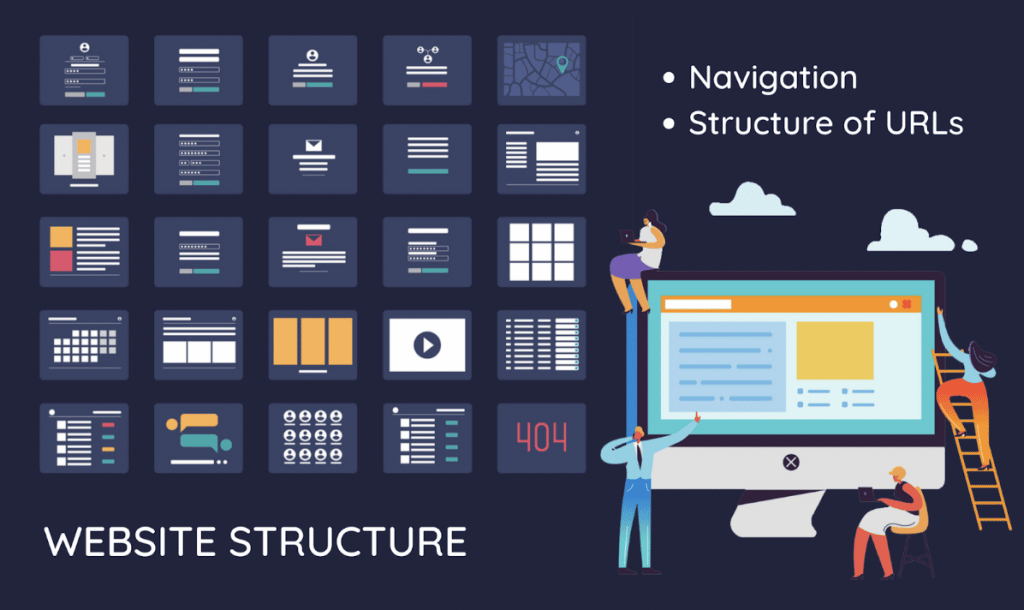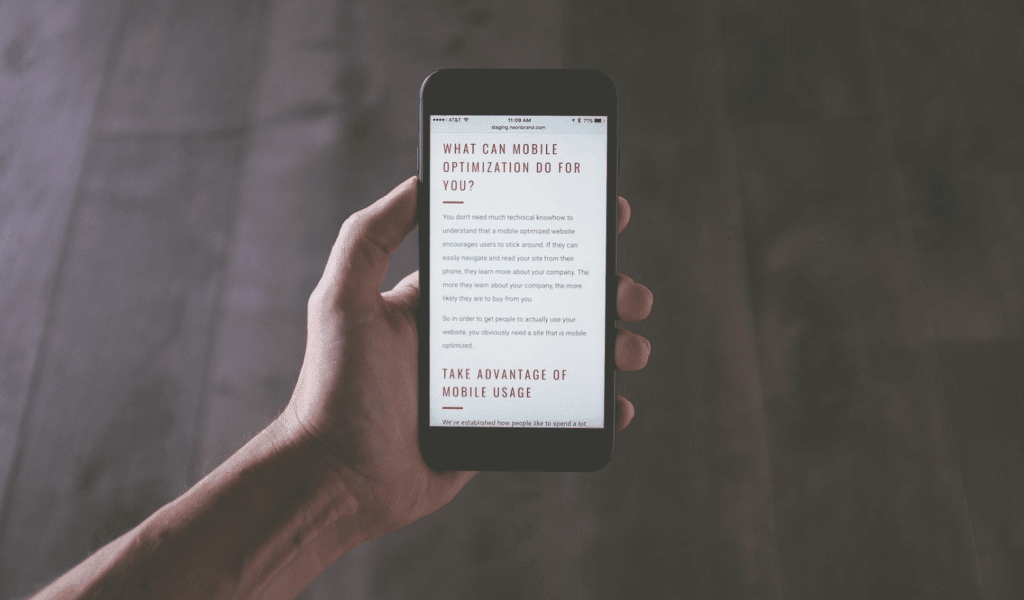Do you want your company to be on the first page of the search engine results? Then you’ll need to learn about site design and search engine optimisation (SEO), which are two of the most important aspects of SEO. Developing and designing sites that follow SEO success factors is referred to as web design and SEO. When you build a website that focuses on SEO, web development, and web design, you can rank higher in the search results, resulting in more customer traffic, leads, and revenues.
Continue reading to discover how to achieve a website that excels at SEO web design!

What Is SEO Web Design?
An SEO-friendly website adheres to SEO best practices such as mobile-friendliness, quick load speeds, and informative URLs. Companies may make it easier for search engines to comprehend and rank company websites in search results by using SEO services and website design, resulting in increased ranks and traffic.
Skipping it might cost your company time, effort, and results when it comes to SEO website design. It’s better to combine SEO and web design since your website and its design can serve as a basis for your SEO approach.

Things To Keep In Mind When It Comes To Web Design And SEO
Now that you know how web design and SEO are linked – let’s look at the specific parts of your website that are influenced by both and how you can improve them for SEO website development and design.

Web Development And Design
Your web design company should, of course, decide on the essential design aspects of your site. However, there are a few top web design and SEO considerations they should keep in mind:
1. Code
When it comes to the coding that designers utilise to generate the critical design features of your website, they have a few alternatives. For a good reason, most people stick to HTML and CSS. While Flash sites are visually appealing, they are incredibly difficult to optimise. Thus, they have a low likelihood of ranking well in search engines. Your SEO will reward you if you advise your hired web design company in Singapore to avoid using Flash.
2. Mobile Compatibility
A rising number of internet users use smartphones and other mobile devices. Your website must be accessible to all of these devices. Not only will this improve the usability and experience of users, but it will also increase your odds of ranking well in Google’s search results. This matters, especially now that mobile compatibility is a huge ranking factor.
The best solution to confront this is a responsive design that makes your site accessible across all browsers and devices. With this, you may avoid duplicate content, which may happen when you have a separate mobile website interface.
3. Readability
While your web design company team is more concerned with the non-text parts of your website, they must select fonts and sizes that your visitors can easily read.
Unless the body copy is taken from a current platform and included in your design specifications, your web development company team should provide plenty of room for copy. To rank higher in search engines, you’ll need a lot of practical, optimised content and a web layout that looks fantastic with a few phrases of text. You could believe that the only aspect of your website that you can optimise is the copy, but this isn’t always the case. When adding photographs to your website, your hired SEO agency and web design team should follow a few best practices as well.
4. File Names
All of your photographs should have file names that are descriptive and rational. Although it may take a bit more effort than simply naming them as is, this will assist search engines in “seeing” your photographs and placing them in context.
5. File Sizes
Despite the fact that large, high-quality photos are enticing, your web designer should make every effort to keep file sizes as small as they can. Large files can cause page load times to delay, resulting in a poor user experience and web design, as well as a spike in your bounce rate—and a drop in your search rankings.
6. Alternative tags
Your photos should have optimised alt tags in addition to their file names. These captions help search engines determine what these photos convey, and they are visible to users when they hover their cursor over a picture.
Alt tags also assist visually challenged users. It includes helping those whose browsers and devices do not support your files in comprehending what is displayed, which is critical for web accessibility.

Website Structure
An SEO agency decides how much control the web designer has over the website structure. Nevertheless, website structure impacts your site’s ranking. Bear in mind these website structure factors:
Navigation
Navigation is the key to a good user experience. The simpler your website’s navigational element is, the easier your website visitors can locate what they’re looking for. The efficiency of the process converts website visitors.
User-friendly navigation reduces the bounce rate and improves your rankings as the visitors are less likely to abandon the website.
Structure Of URLs
In URL structure, the rule of thumb is that your URL should explain what the web page is about. Using hyphens to separate words and descriptive and applicable keywords helps search engines identify your website. It also boosts web user recalls.
The Takeaway
It is possible to let one person do both web design and SEO services in Singapore to guarantee structural optimisation. However, remember that these two are different disciplines. It is better for businesses to hire experts in these separate disciplines instead of employing one person.
Companies have the option of getting a full-service web design agency. These agencies have teams of skilled and experienced designers, developers, and SEO vendors who will work on your website to optimise and improve its ranking.
OOm Singapore provides full-service web design, digital marketing, and SEO services in the country. Let the experts handle your website. For more information, visit OOm Singapore here.
